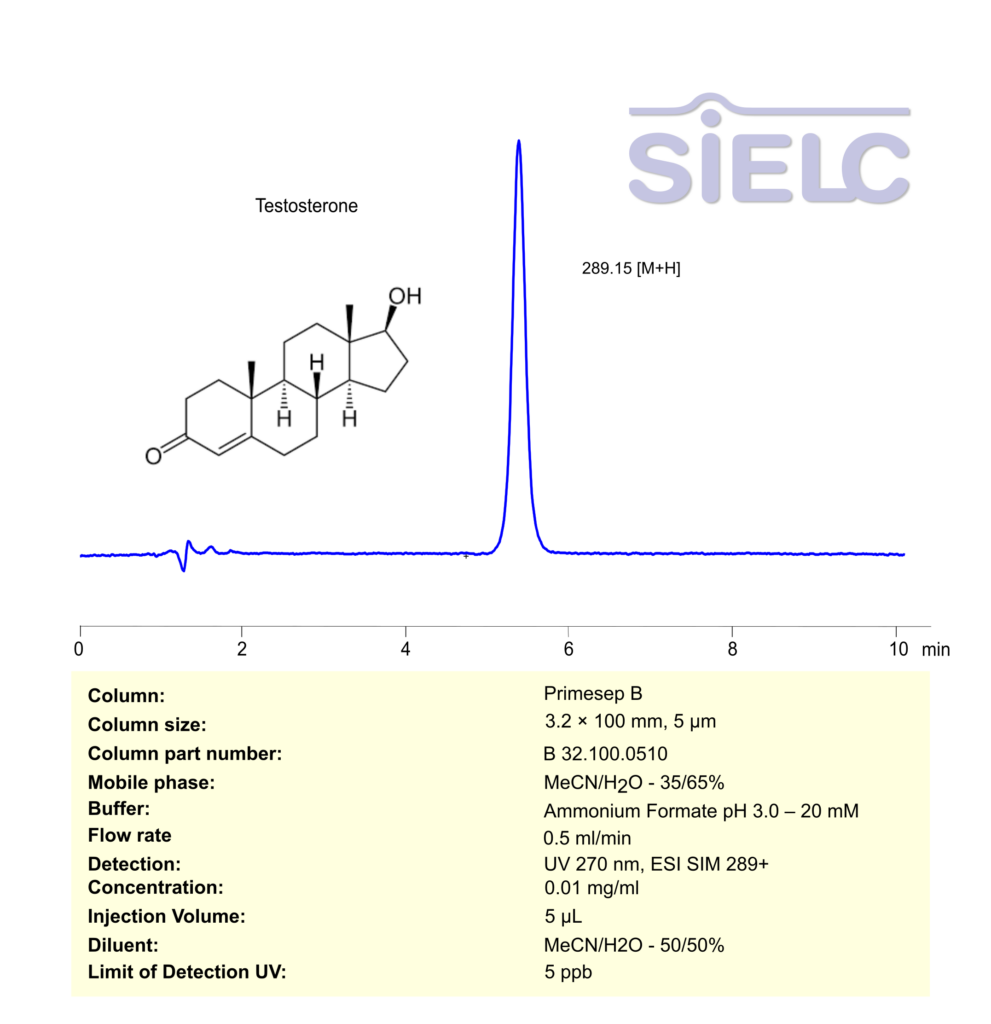High Performance Liquid Chromatography (HPLC) MS Method for Analysis of Testosterone on Primesep B by SIELC Technologies
Separation type: Liquid Chromatography Mixed-mode SIELC Technologies

High Performance Liquid Chromatography (HPLC) Method for Analysis of Testosterone
Testosterone is the primary male sex hormone, though it is also present in smaller amounts in females. It plays a key role in the development of male reproductive tissues such as the testes and prostate, as well as promoting secondary sexual characteristics like increased muscle and bone mass, and the growth of body hair. In addition to its role in reproduction and physical development, testosterone is also important for general health and well-being.
Testosterone can be retained, separated and analyzed using a Primesep B mixed-mode stationary phase column. The analysis employs an isocratic method with a simple mobile phase comprising water, acetonitrile (MeCN), and ammonium formate as a buffer. This method allows for detection using UV 270 nm.
You can find detailed UV spectra of Testosterone and information about its various lambda maxima by visiting the following link.
| Column | Primesep B, 3.2 x 100 mm, 5 µm, 100 A, dual ended |
| Mobile Phase | MeCN – 35% |
| Buffer | Ammonium Formate pH 3.0 – 20 mM |
| Flow Rate | 0.5 ml/min |
| Detection | UV 270 nm, ESI SIM 289+ |
| Sample | 0.01 mg/ml |
| Diluent | MeCN/H2O- 50/50% |
| LOD* | 5 ppb |
| Class of Compounds | Hormone |
| Analyzing Compounds | Testosterone |
Application Column
Primesep B
Column Diameter: 3.2 mm
Column Length: 100 mm
Particle Size: 5 µm
Pore Size: 100 A
Column options: dual ended
LC MS Detection





